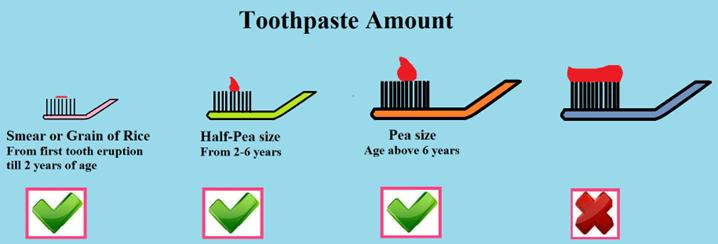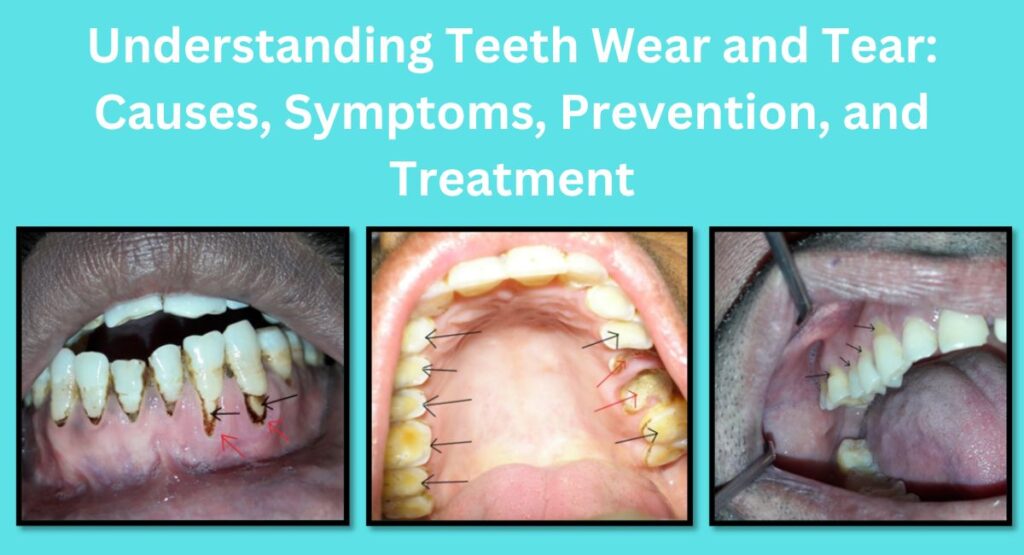
Fluoride strengthens teeth and helps prevent decay
What is Fluoride?
Fluoride is a naturally occurring mineral found in the following:
- Soil
- Water
- Ground water
- Plants
- Food
- Rocks
- Air
Fluoride is a mineral primarily present in teeth and bones, but it can also be found in trace amounts in other tissues of the body such as blood, kidney, and liver. It plays a vital role in the mineralization of teeth and bones, especially during childhood when these tissues are developing. However, even after the formation of teeth and bones, fluoride continues to play a role in maintaining dental and bone health. That’s why, many countries have added safe amount of fluoride to their community water supply to help prevent tooth decay and promote good oral health as well as overall health. This process is called water fluoridation. When fluoride is consumed in the correct amount during this time, it can help to keep your teeth and bones strong and healthy, making them more resistant to decay and fractures respectively. It is important to note that the correct amount of fluoride intake is crucial, as both overconsumption and underconsumption can lead to dental, skeletal, and general health problems.
This post may contain affiliate links which means we may receive a small commission (at no additional cost to you) for purchases made through links. We include products we think are useful for our readers. Learn more on our Disclaimer page.
Uses of fluoride
In terms of human health, fluoride is mainly used to improve dental health.
- Fluoride is added in local water supply and in many over-the-counter (OTC) products, such as toothpastes, mouth rinses, and supplements to prevent tooth decay and improve dental health.
If you tend to get a lot of cavities, it is important to consult your dentist before using high concentration fluoride mouth rinses and other OTC products to avoid any potential harm. Consulting your dentist can help ensure appropriate use of fluoride products to promote good oral health and avoid potential harm to the body.
- Furthermore, fluoride is added in some dental materials, such as fillings, sealants and topical applications to prevent tooth decay.
- It is used in the treatment of osteoporosis to improve bone density, in the management of certain kidney diseases, and in some topical medications for the treatment of skin conditions.
- It is also used to treat rheumatoid arthritis and to prevent the formation of kidney stones.
- Used in medical imaging scans, such as PET scans.
- It is used in research studies as a potential treatment of certain types of cancers.
Fluoride is also used in:
- Component in some types of batteries.
- Making of ceramics and glass.
- Manufacturing of some types of electronics.
- Industrial processes such as aluminum refining and uranium processing.
- As a cleaning agent
- In pesticides
- To make Teflon, steel, and aluminum products.
What are the benefits of fluoride
Fluoride is beneficial to dental health if provided in adequate amount during and after development of teeth.
During formation of teeth:
- Helps in the formation of strong and healthy teeth.
- Reduces the risk of cavities.
- Fluoride makes the teeth stronger, thereby preventing their breakdown from bacterial attack.
After formation of teeth:
- Strengthens the teeth, prevents their breakdown and thus reduces risk of cavities.
- Slowdown the breakdown of teeth by inhibiting bacterial activity.
- Reverses early signs of tooth decay.
- Promote remineralization (rebuilding) of weakened parts of tooth.
- Prevents the growth of harmful oral bacteria.
Bacteria in your mouth easily break down carbs, especially refined sugar, creating acid that eat away minerals in your tooth. This process, known as decay (demineralization), weakens your teeth and increases their susceptibility to further decay.
Many studies found that children living in areas with fluoridated water had fewer decayed, missing and filled teeth compared to those living in non-fluoridated areas.
Systemic Fluoridation vs Topical Fluoridation
When an optimal amount of fluoride [0.7 parts per millions (ppm)] is consumed during the formation of adult teeth, fluorapatite crystals are formed within the tooth. These crystals are harder, larger, and more resistant to the acid released by plaque bacteria. Fluorapatite crystals can also form in already-formed teeth through exposure to fluoridated water or food, as well as through fluoride application or toothpaste. However, it is important to note that even with fluorapatite crystals in your teeth, regular brushing and flossing are still necessary for maintaining good oral hygiene.
Fluoride ingestion during teeth formation is beneficial when consumed in correct amount as it strengthens teeth and makes them more resistant to decay. However, once teeth have formed and erupted in the mouth, daily ingested fluoride, calcium, or other minerals have no effect on the teeth because the outer layers of teeth lack blood supply. After formation of teeth, topical applications such as toothpastes or professional applications can be effective in strengthening enamel, preventing cavities, and even re-mineralizing early decay.
If your local water supply lacks adequate fluoride, or if a sufficient amount of fluoride was not ingested during teeth formation, there is no need to worry, fluoridated toothpaste, and professional fluoride supplements and applications can be used instead. Studies have shown that fluoride is more effective in preventing cavities when applied directly to the teeth (topical fluoridation) than when ingested during teeth formation (systemic fluoridation). Examples of topical fluoridation include the use of fluoride toothpastes, fluoride mouth rinse, and professional fluoride applications. Topical fluoride application has no side effects if not swallowed, and it is better to deliver fluoride directly to the tooth instead of ingesting it. However, it’s important to seek your dentist’s advice to ensure appropriate and safe use of topical fluoridation.
This does not mean that systemic fluoridation is not helpful. It is equally important and helps in building and strengthening our teeth and bones. However, fluoride must be consumed in the adequate amount, neither too little or nor too much, and at the right stage of development. It should be noted that excessive ingestion fluoride during formation of teeth can cause dental fluorosis, a condition that affects the appearance of teeth. Therefore, it is important to consult with a dental professional or physician to determine the optimal amount of fluoride for your individual needs.
Potential side effects of fluoride
Although fluoride is a naturally occurring compound, consuming large doses, particularly during early age, can lead to potential side effects. Regular topical fluoride applications, such as fluoride toothpaste, do not cause side effects as long as they are not swallowed in large quantities.
The safe level of fluoride in drinking water according to the World Health Organization (WHO) is 0.5 to 1.5 parts per millions (ppm) equivalent to 0.5 to 1.5 milligrams per liter (mg/L). There is no evidence to suggest that the recommended amount of fluoride in toothpaste is harmful to the body. When used as directed, fluoride in toothpaste is considered safe and effective in preventing tooth decay.
Exposure or consumption of high concentration of fluoride can results in many side effects on health, including poisoning, birth defects, cancer, bone fluorosis, and teeth fluorosis.
Dental fluorosis
Dental fluorosis occurs when excessive amount of fluoride is ingested by children when their teeth are still forming under their gums, resulting in the appearance of white or yellowish spots on the teeth. This is a condition that only occurs during the formation teeth in childhood but persist throughout a person’s life. Once teeth have fully formed, dental fluorosis cannot occur, even with high fluoride intake or topical application. But excessive fluoride consumption can still have adverse effects on the body. While high intake does not directly affect teeth that have already formed, it can still have negative impact on overall health.

Teeth fluorosis.
Dental fluorosis spots are internal and require specialized dental treatment as they cannot be removed by regular cleaning, which only addresses external spots caused by substances like tobacco and food. Most cases of dental fluorosis are mild in nature and create only cosmetic concerns. It typically does not cause any symptoms or harm. However, severe dental fluorosis can cause the outer layer of the teeth to become brittle and fragile, which can increase the risk of tooth decay and fractures.
Dental fluorosis primarily affects children under 8 years who have permanent teeth still developing. The most critical time is under the age of two years. Children are also more likely to swallow toothpaste, which contains significantly higher fluoride than fluoridated water. To lower this risk, supervise your child’s brushing habits and ensure they don’t swallow large amount of toothpaste.
Skeletal fluorosis
Skeletal fluorosis is a bone disease caused by long-term exposure of high levels fluoride in drinking water or other sources. It is similar to dental fluorosis, but affects bones rather than teeth. Symptoms include joint pain, stiffness, and bone fractures. The disease is rare in countries with regulated water fluoridation, but can occur areas with high levels of natural fluoride or industrial, or long-term exposure. Accidental contamination, geologic deposits, and swallowing toothpaste have all been cited as potential causes.
Children who consume excessive amounts of fluoride from various sources over a prolonged period of time are at higher risk of developing dental and skeletal fluorosis. This risk increases when children not only ingest fluoridated water and food but also swallows large amount of fluoridated toothpaste and consume excessive amount of fluoride in supplements. Therefore, it is important to monitor children’s fluoride intake and ensure they are not exposed to excessive amounts of fluoride from multiple sources.
Is fluoridated water safe?
The World Health Organization (WHO) and the Center for Disease Control and Prevention (CDC) both endorses the practices of water fluoridation as a safe and effective public health measure. However, consumption of excessive fluoride from all sources can lead to variety of health problems, which is why it is important to follow recommended guidelines for fluoride intake.
If you’re concerned about your family’s fluoride intake, you can reduce fluoride exposure by choosing fluoride-free toothpaste. However, it is recommended not to use water filters or switch to bottled water in an attempt to remove fluoride from your drinking water, as these methods may also remove important minerals and trace elements essential for your overall health and well-beings. It is important to consult with a physician before taking any action as insufficient minerals and trace elements consumption can have negative effects on your body.
Are there any side effects on the body from inadequate fluoride intake?
Yes, inadequate fluoride intake can have several side effects on the body. Fluoride is important for maintaining good dental health and bone strength. Inadequate fluoride intake can lead to an increased risk of tooth decay, weak bones, and osteoporosis. It can also affect development of teeth and cause hypoplastic and hypo-mineralized teeth, which is a cosmetic condition. However, excessive fluoride intake can also have adverse effects, so it’s important to maintain a balanced intake.
How do I know if my community’s water supply is fluoridated?
You can contact your local water supplier or public health department to find out whether your tap water is fluoridated or not. You can also check fluoride level in water supply using the CDC’s tool, or contact your physician or dentist to find out the same.
If your area does not have fluoridate water, but you desire the dental benefits of fluoride, here are some recommendations:
- Consult with your dentist for guidance on fluoride intake.
- Brush your teeth at least twice a day using a fluoride toothpaste, but not recommended for children under 3 years old. It’s important to guide and supervise child’s brushing to ensure they use the appropriate amount of toothpaste and avoid swallowing it.
- Ask your dentist about professional fluoride treatments, which can be applied topically to your teeth to prevent decay.
- Use high concentration fluoride products, like fluoride mouthwashes, only after consulting with your dentist. These products are not recommended for children below 6 years old.
- Maintain regular check-ups with your dentist to monitor your dental health and fluoride intake.
Following these recommendations can help promote good dental health, even in areas without fluoridated water.
Fluoride content and safe usage in toothpaste
The fluoride content in toothpaste varies among different brands and types. However, according to the American Dental Association (ADA) the recommended fluoride content in toothpaste should be as follow:
- Toothpaste for adults with 1000-1500 ppm of fluoride.
- Children between 3-6 years old can use toothpaste with 1000-1500 ppm of fluoride under adult supervision.
- Toothpaste for children under 3 years old should have no more than 1000 ppm of fluoride.
It is recommended for parents to brush the teeth of their child below the age of 3 years and to continue to assist with brushing until the child is able to properly brush their teeth themselves, usually around age of 6 or 7 years.
Fluoride toothpaste
Fluoride toothpaste for kids
Alcohol-free Fluoride mouthwash
Alcohol-free Fluoride mouthwash for adults & kids
Alcohol-free Fluoride mouthwash for kids
Safe and Recommended Use of Fluoride Toothpaste
To ensure safe use of fluoride toothpaste, it’s important to follow the instructions on the label and use only the recommended amount as shown in image.

The correct amount of toothpaste
- For adults – a pea-sized amount of toothpaste.
- Children between 3 to 6 years old – half pea-sized amount of toothpaste.
- Children below 3 years old – a rice grain-sized amount of toothpaste.
It is generally not recommended to use fluoridated toothpaste for children under the age of 3 years, they are more likely to swallow the toothpaste instead of spitting it out. Swallowing too much fluoride toothpaste at a young age can increase the risk of dental fluorosis and overall health concerns. Instead, it is recommended to use a non-fluoridated toothpaste for children under three and to consult your dentist or a pediatric dentist about when to start using a fluoridated toothpaste.
Parent should guide and supervise their children’s brushing to ensure the appropriate amount of toothpaste is used and discourage swallowing.
Conclusion
Fluoride is a naturally occurring mineral that is essential in adequate amount for stronger teeth and bones. It prevents tooth decay and bone fractures. It is required mainly during formation of these tissues and also for the maintenance of skeletal tissues. Fluoride is also added to many dental products, including toothpastes for stronger teeth and to prevent decay. However, both underconsumption or overconsumption of fluoride can have negative effects not only on teeth but also on overall health.
To ensure your safety, you should find out the fluoride level in water in your area, as well as other sources of fluoride in your life, by contacting local government authorities and requesting necessary action. While the amount of fluoride added to drinking water and toothpastes is considered to be relatively safe, exposure to high levels of fluoride may be linked to several health issues. Therefore, it is recommended to consult your physician and dentist to ensure safe and correct usage of for your overall health and well-beings, especially if you have children.
Carefully supervise your children to ensure they receive the correct amount of fluoride for their better dental and overall health. If you are still concerned, you can use non-fluoridated toothpaste and other products. Remember, regular and proper brushing and flossing, as well as regular dental visits, are much more important than the type of toothpaste. So, take recommended precautions, stay informed, and make the best choices for your and your family’s health.











